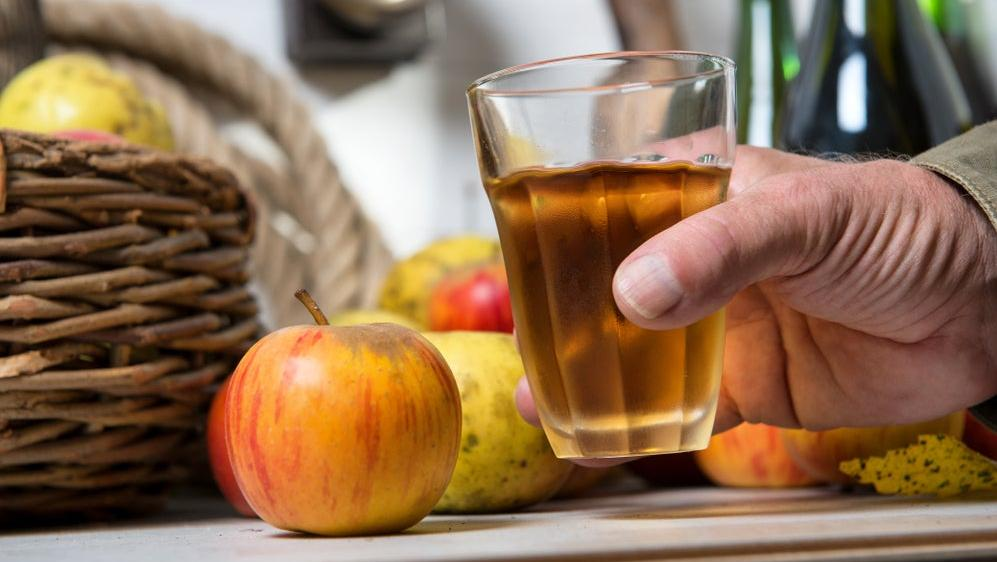The Difference Between Apple Cider And Apple Juice
The two drinks feel a world apart, especially during the fall.
"If it's clear and yella, you've got juice there, fella. If it's tangy and brown, you're in cider town."
This wisdom from Ned Flanders is really all you need to know. But I'll give you some more details about how these two apple beverages differ.
Filtered vs. unfiltered
Apple cider, as you may know, is an opaque brown drink. Apple juice is clear and, as Flanders says, yellow. The difference in color, translucency, and flavor between the two is due to a difference in filtration. Apple cider is not filtered, which means little particles of apple are part of the drink. Apple juice, on the other hand, is filtered several times, resulting in a clear and lighter liquid.
This video shows how apple juice is made. As you can see, toward the beginning of the process, it looks more like apple cider (around 1:25). But by the time it's gone through all of its filtration, it ends up clear (see 2:20).
Before their paths diverge at filtration, apples that will become juice and those that will become cider go though similar processes. Apple cider is made using a press, whereas commercial apple juice production involves extraction of the juice, but both are turned to mush first.
Pasteurization
Pasteurization, a process by which a liquid is heated to a high enough level to kill off bacteria, is a hot topic (ha ha) in the cider world, and this is another area where apple juice and apple cider diverge. Sometimes.
Per the FDA, most of the juice sold in the United States is pasteurized. With cider, though, things can be a little more nuanced, and rules seem to vary state by state. The FDA requires cider to be pasteurized if it's going to be sold in stores, meaning an orchard makes cider and sells it to a store, which then sells it to the consumer. States can have rules more onerous than that if they choose. In New York, all cider must be pasteurized. In Vermont, the FDA rule is more or less followed. Cider must be pasteurized when it is sold in a store, but if it's sold directly from its creator to the customer, it does not. At Green Mountain Orchard in Putney, Vermont, this is explained right on the website.
"We use only high quality, tree-picked fruit in our cider so there is no need to pasteurize it," the site says. "However, State laws prohibit orchards from selling unpasteurized cider in stores. This means that you can only get our fresh cider in one place, directly from the people who make it."
The FDA requires warning labels when something is not pasteurized, but doesn't require it on juice or cider "sold by the glass, for example, at apple orchards, farmers' markets, roadside stands, juice bars, and some restaurants."
If you've bought cider at the grocery store and you've also bought it directly at an orchard, there's a chance you've had both pasteurized and non-pasteurized apple cider. Purists would argue that there are flavor differences. I'm not sure I've personally noticed a difference, but I am not a cider aficionado. For what it's worth, pasteurized cider can have a darker appearance than raw cider.
Fresh vs. shelf-stable
As you probably know, a lot of the apple juice we buy at the grocery store is shelf-stable, meaning we don't need to keep it refrigerated unless we open it. Apple cider, on the other hand, is a fresh product—even when pasteurized—so it needs to stay refrigerated and doesn't have a very long shelf life.
At this time of year, of course, cider doesn't need a very long shelf life. There's something about the leaves changing that makes me want to cozy up with some, whether it's hot or cold, pasteurized or not. As long as it's tangy and brown, I head to cider town.
